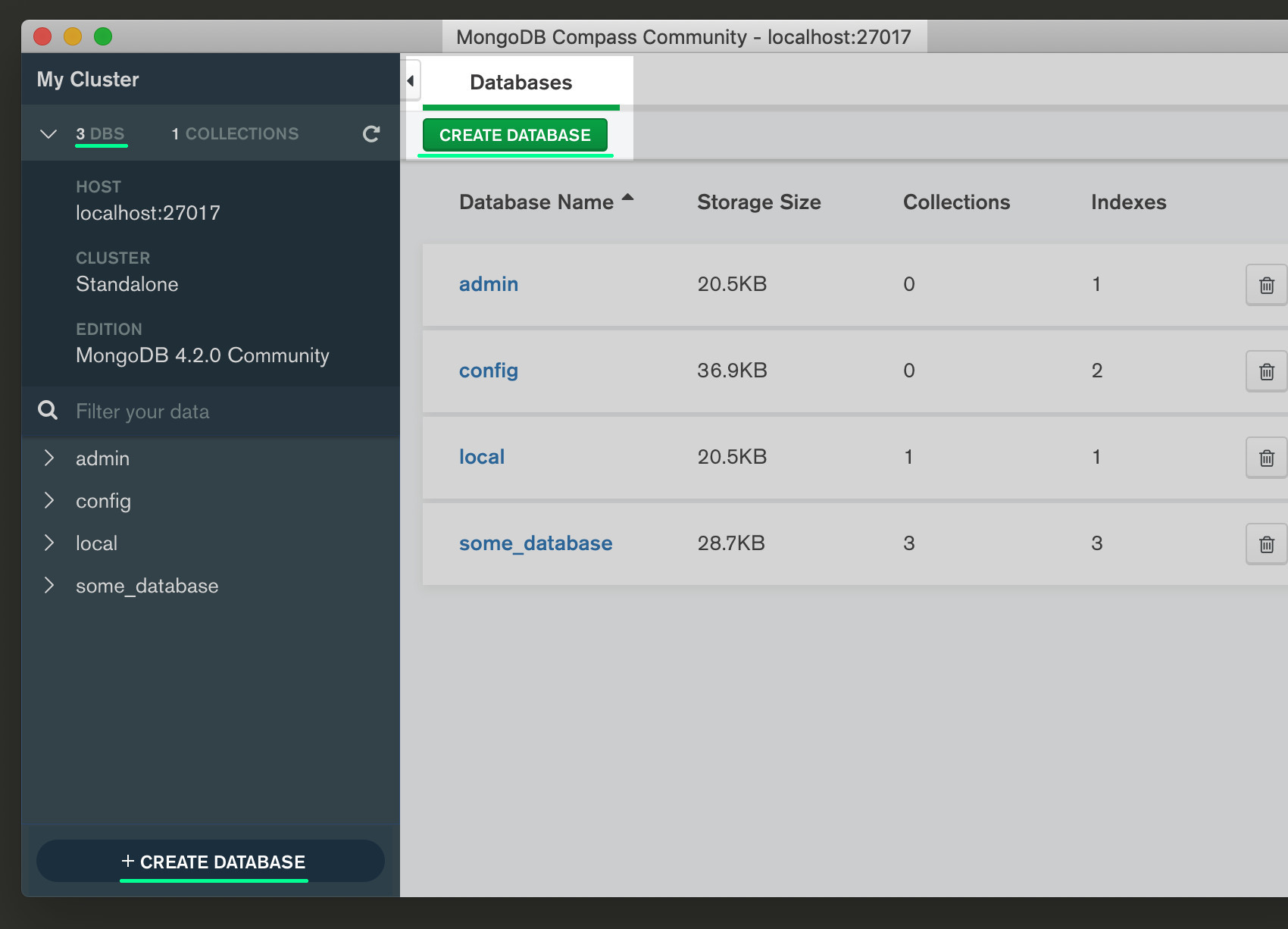
$lookup(Aggregation) creates an outer left join with another collection and helps to filter data from merged data. We can join documents on collections in MongoDB by using the $lookup (Aggregation) function. To resolve this problem, we introduce the JOIN concept, which facilitates the relationship between the data. MongoDB has some issues with linking data from one collection to another unless you use simple Script Query functions. MongoDB is a straightforward and simple-to-configure database that provides high performance, automatic scalability, and high availability.
#Mongodb compass create new database license#
Furthermore, it is distributed under the Server Side Public License (SSPL), which supports a novel mechanism for storing and retrieving large amounts of data. This enables it to store various types of data. MongoDB, which was founded in 2009, employs the Document-Oriented Database Model to organize data into documents and collections rather than tables. MongoDB is a non-relational Database Management System that is Open Source and Cross-Platform.
#Mongodb compass create new database how to#

Even though MongoDB isn’t an RDBMS (Relational Database Management System) and doesn’t offer extensive join methods, you can use several other operators to join two collections in MongoDB. In this case you can simply set a filter on the property_type field that is equal to the requested value.There are several NoSQL databases out there, but MongoDB is the most commonly used, and it is available both as a Cloud Service and for Deployment on Self-Managed Systems. Suppose you want to extract all properties of type “House” from the AirBnB database. Information about the indexes defined for the selected collection is also shown. The other 3 menus ( Explain Plan, Indexes and Validation) will not be used in this tutorial, but are used, as you can see from their names, respectively to analyze the execution plan of a query, manage indexes and insert validation rules for the documents stored in the collection.įinally, in the upper right part of the screen some information about the number of comments saved, the space occupied both by the collection and on average by each document is always displayed. Next we’ll see how to use it to understand which queries can return results of interest. The Schema menu is used to analyze the schema of the data in the collection and retrieve some statistics about the distribution of the data. The second menu is related to aggregation pipelines and is used for more complex queries that require transformation operations of the data present in the documents. Also, if there is any syntax error the badge next to the form field will have a red colored background. As you type, in fact, MongoDB Compass will suggest the fields and operators that might be useful to compose the query.

Very useful features of the query form are the auto-completion and the syntax validation.

To enter all these options, simply expand the query form by clicking on the OPTIONS button.

It is possible to insert filters, projections, sort conditions and limitation of the number of records returned. For each document displayed, you can edit it, copy it to your clipboard, duplicate it and delete it using the buttons on the right associated with each document.Īs mentioned earlier, this screen can be used to query the collections. The other views are the JSON (available since version 1.2) and the tabular view. If there are complex structures within a document (embedded documents, arrays) it is possible to expand them to display the data present.


 0 kommentar(er)
0 kommentar(er)
